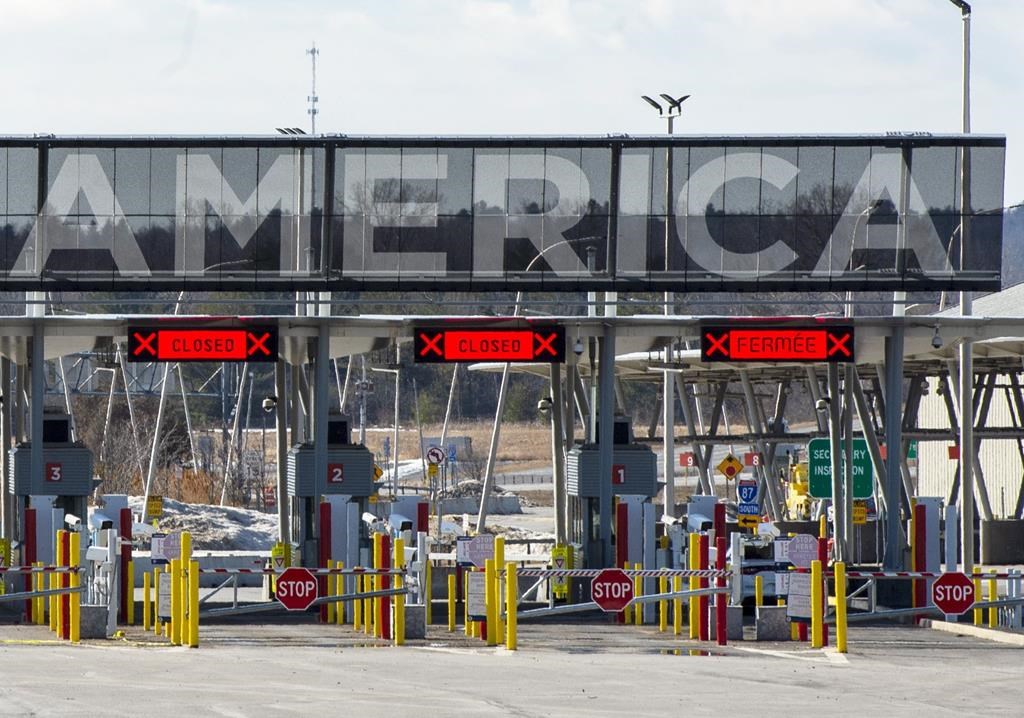As Canada moves into its 12th month of land-based border restrictions to cut the spread of COVID-19, Saskatoon-based Siemens Transportation says there has been some road bumps on the way, but not nearly as rough as expected.

“If someone was to tell me a year ago (about the restrictions), I would have said ‘yeah that border crossing is going to be a big mess.’ And it really hasn’t been,” president Doug Siemens said.
“Wait times to get through used to be seven minutes; now it’s about four minutes,” he said as an anecdotal example.
Saskatchewan has 12 land-based border crossing sites staffed by Canada Border Services Agency (CBSA) members. They provide access to and from North Dakota and Montana.
“The volume of traffic, with essential travel only (allowed), has decreased,” said Scott Kienlen, the corporate chief for CBSA in its southern Alberta and Saskatchewan districts.
“That type of volume is about 88 per cent less than a year ago for carriers hauling commercial goods, that traffic has remained fairly constant over the last year.”
March 21 will mark a full year since the federal government closed down non-essential travel (i.e. tourism and leisure) across land-based border crossings, in the hopes of curbing the spread of COVID-19.
The feds classified commercial transport drivers (truckers) as essential workers and therefore as exempted from travel restrictions and federally-imposed quarantine measures.
“We don’t have a big issue crossing our borders that’s curtailing economic benefits for the province,” Siemens said.
He called the recent issues that have arisen “blemishes,” which likely existed before the pandemic started; now his company is just more aware of them. He used the ArriveCAN mobile travel application, created by the feds, as an example.
“They try to make it paperless and seamless and you run into bumps with that what you or Joe Public wouldn’t see is the average age of truck drivers is not young; it’s older. So this is new technology; older people don’t adapt to the technology as quick as some young guys.”
Siemens uses in-house tracking with its rigs to see where drivers are; the ArriveCAN app has interfered with the company’s own tracking software in some cases, he said. “Those are things we have to work through; they’re headaches.”
He said Prairie-based truckers are lucky, because they don’t have to deal with the heavy, daily congestion their counterparts do in Ontario and British Columbia.
Countrywide data from the CBSA supports Kienlen’s and Siemens’ assessments of consistency for commercial truckers through the pandemic. For Feb. 8 to 14 this year, 110,088 truckers crossed into Canada. That’s an increase of 343 for the same time period last year and an increase of 6,385 for the same period in 2019.
The Saskatchewan Trucking Association (STA) recently issued a release in support of the stance taken by its national counterpart, the Canadian Trucking Alliance, raising concerns for the prospect of any further border testing of truck drivers.
“While the STA does not support mandatory COVID-19 testing for truck drivers at the Canada-US border, the STA supports the voluntary COVID-19 testing approach for truck drivers by provinces and the federal government,” it states.
“The STA encourages voluntary testing sites to be away from borders and busy ports of entry and to continue exploring locations professional drivers can easily access, like truck stops or resting areas,” it adds. Truckers are already screened by border officials for COVID-19 symptoms upon re-entry into Canada.
Both groups have expressed concern that mandatory testing could cause border delays in the supply chain of moving essential goods.



Comments